Abstract
Evidence is presented supporting the hypothesis that the positive inotropic effect after an abrupt increase in systolic pressure (Anrep effect) is the recovery from subendocardial ischemia induced by the increase and subsequently corrected by vascular autoregulation of the coronary bed. Major evidence consists of data obtained from an isolated heart preparation showing that the Anrep effect can be abolished with coronary vasodilation, and that with an abrupt increase in systolic pressure there is a significant reduction in the distribution of coronary flow to subendocardial layers of the ventricle. Furthermore, the intracardiac electrocardiogram shows S-T segment and T wave changes after an abrupt increase in ventricular pressure similar to that noted after coronary constriction. Major implications are that normally there may be ischemia of the subendocardial layers tending to reduce myocardial contractility which may account, in part, for the positive inotropic effect of various coronary vasodilators; that with an abrupt increase in ventricular pressure the subendocardium is rendered temporarily ischemic, placing the heart in jeopardy from arrhythmias until this is corrected; and that end-diastolic pressure and the intracardiac electrocardiogram may provide a means of evaluating the adequacy of circulation to subendocardial layers in diseased ventricles when systolic pressure is abruptly increased.
Full text
PDF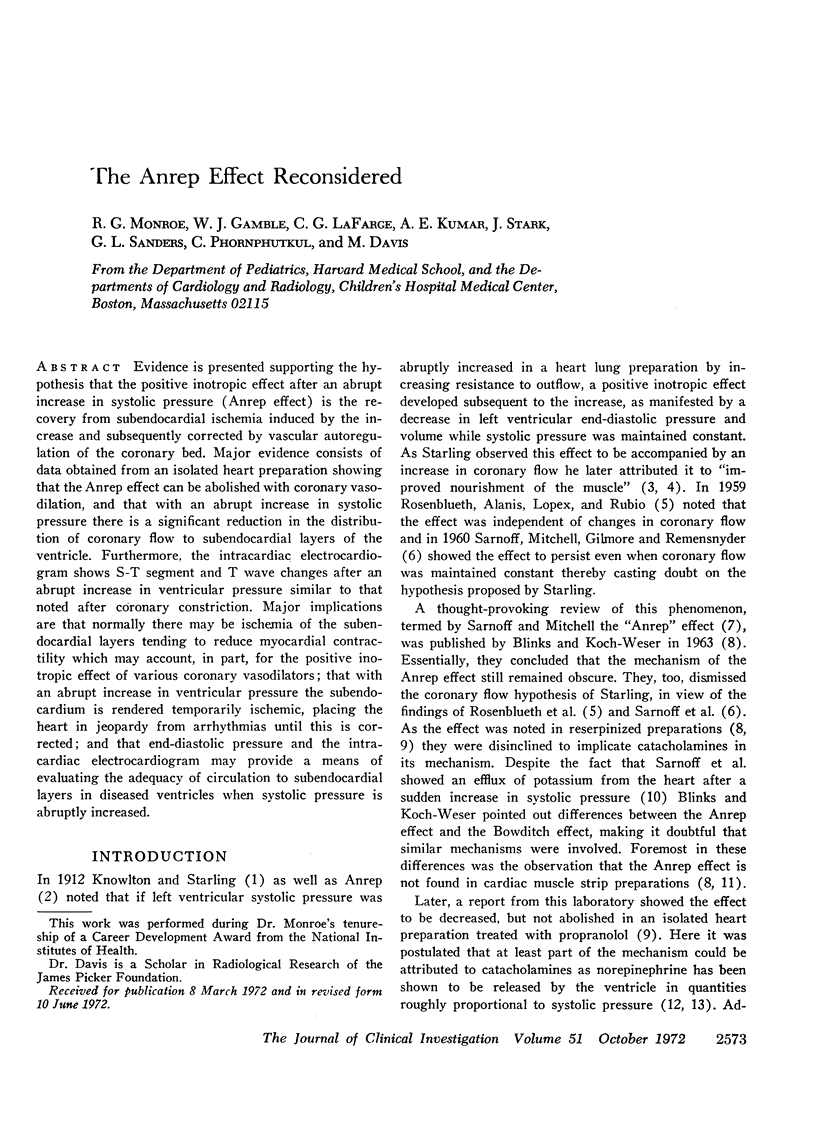
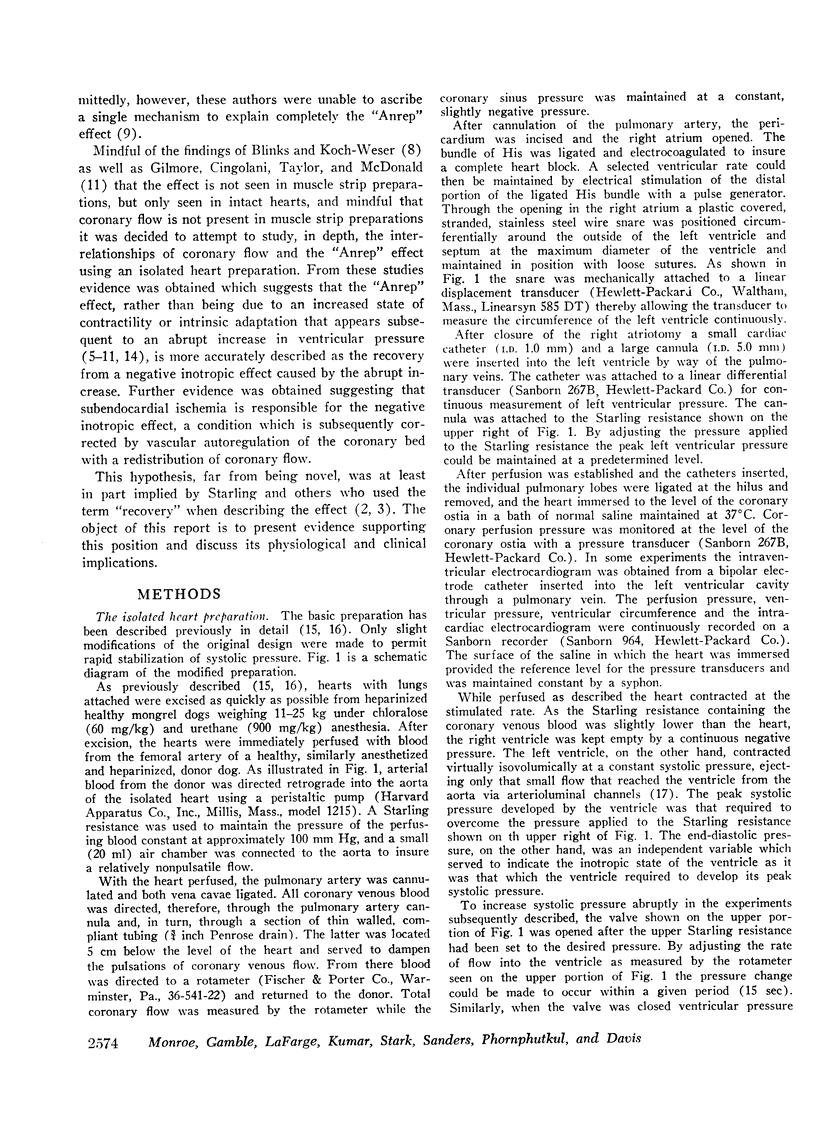

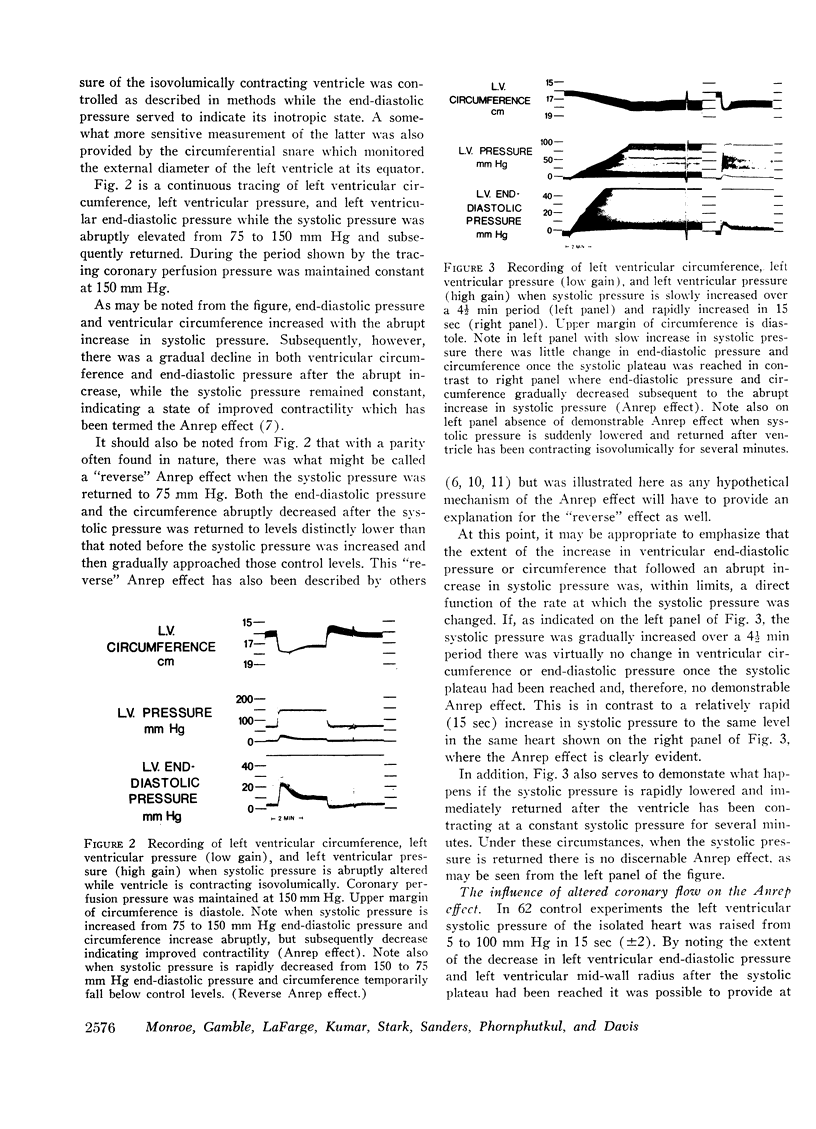
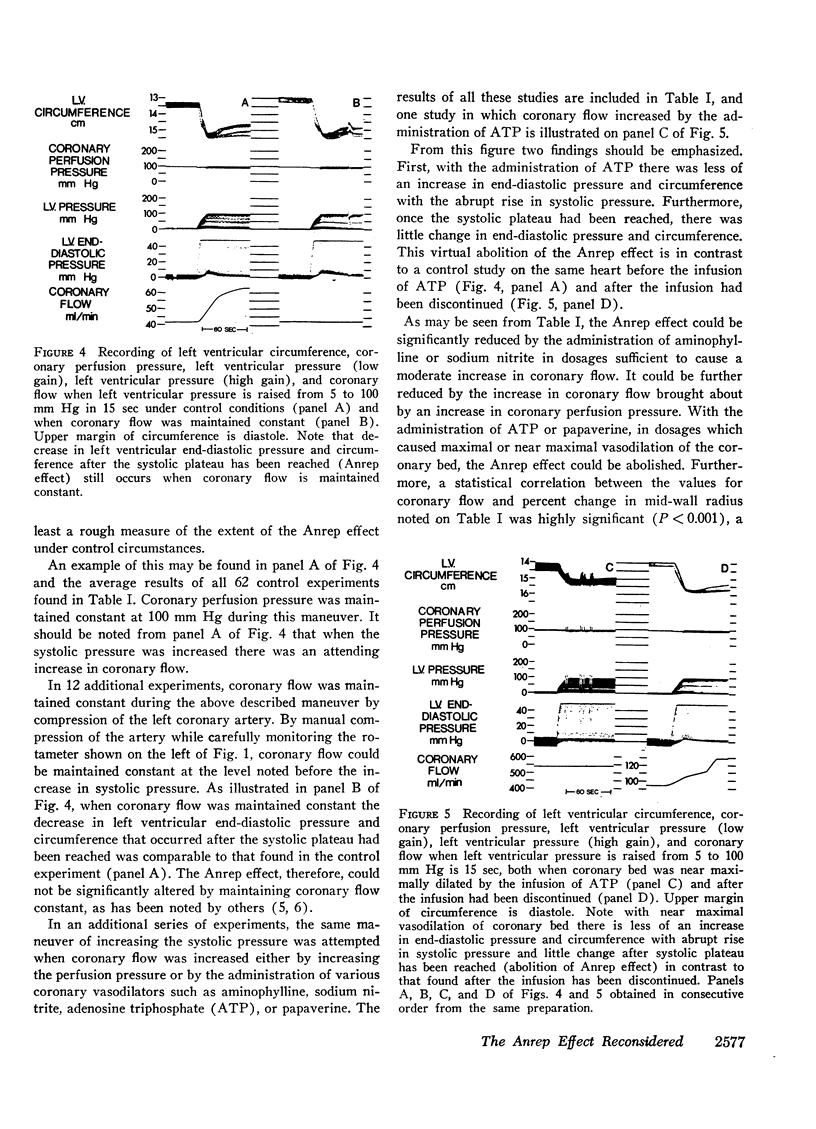
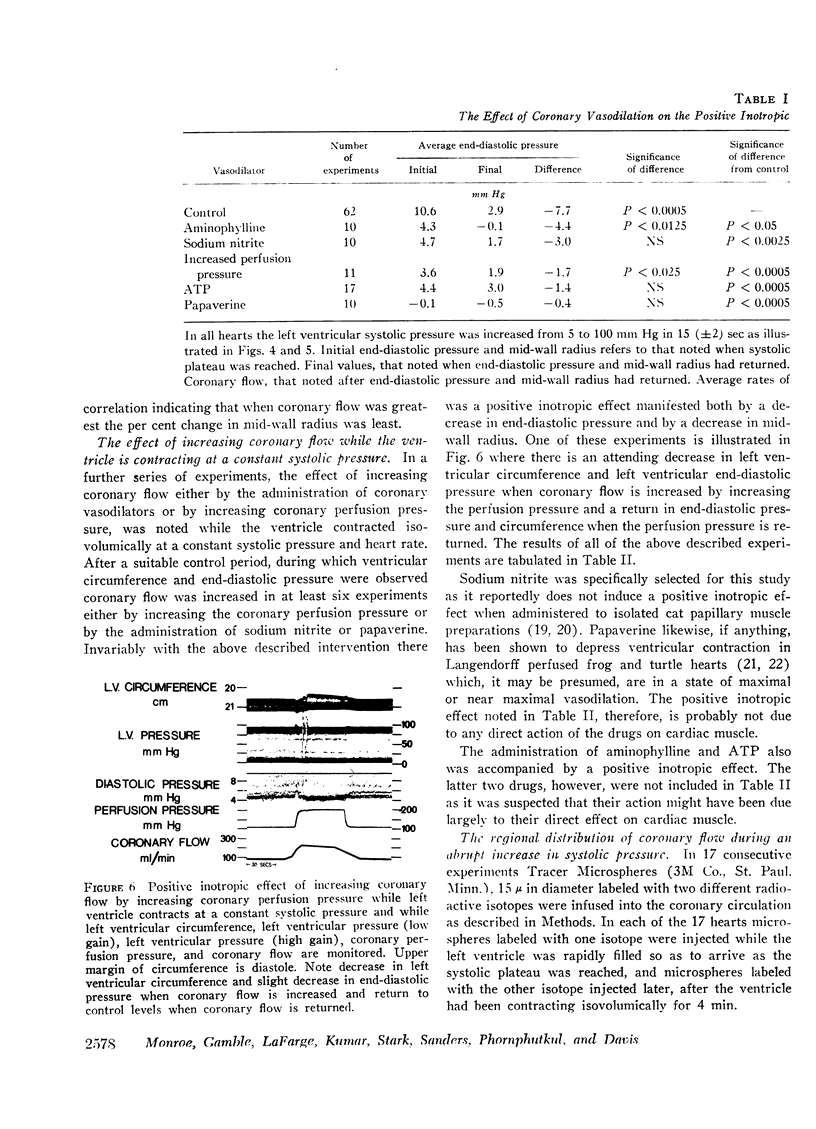
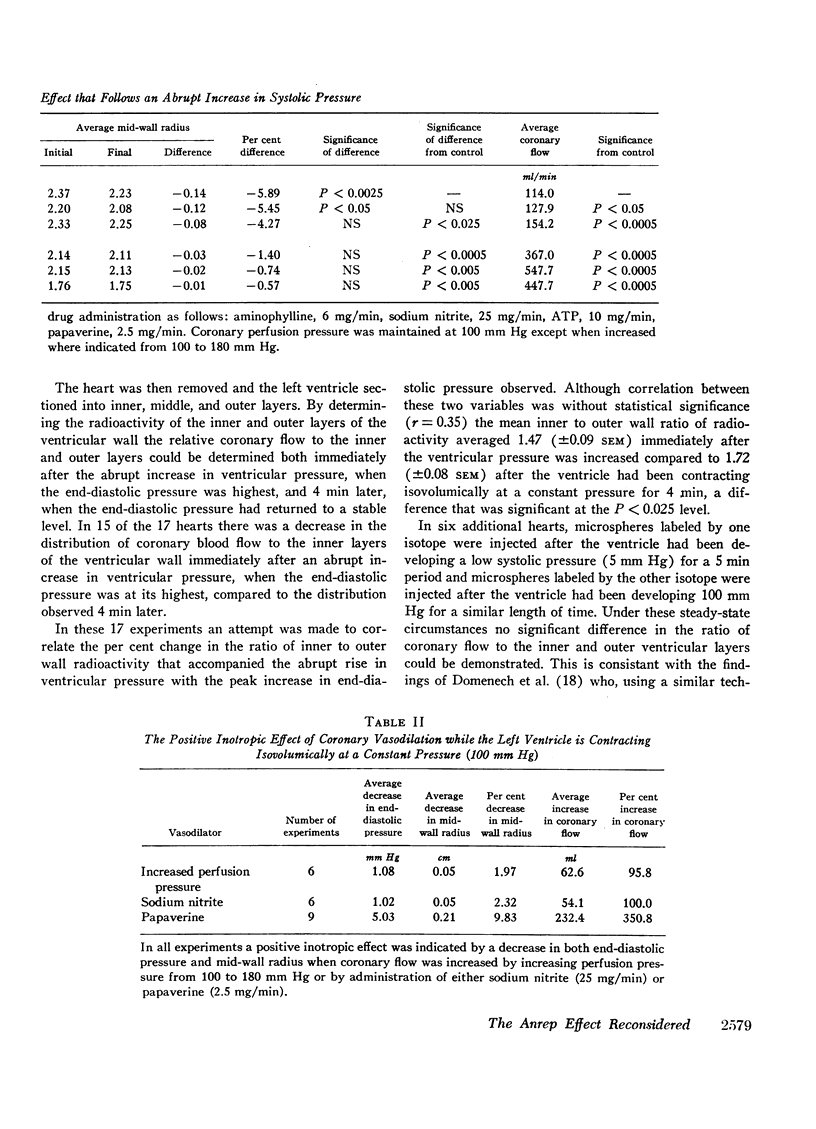
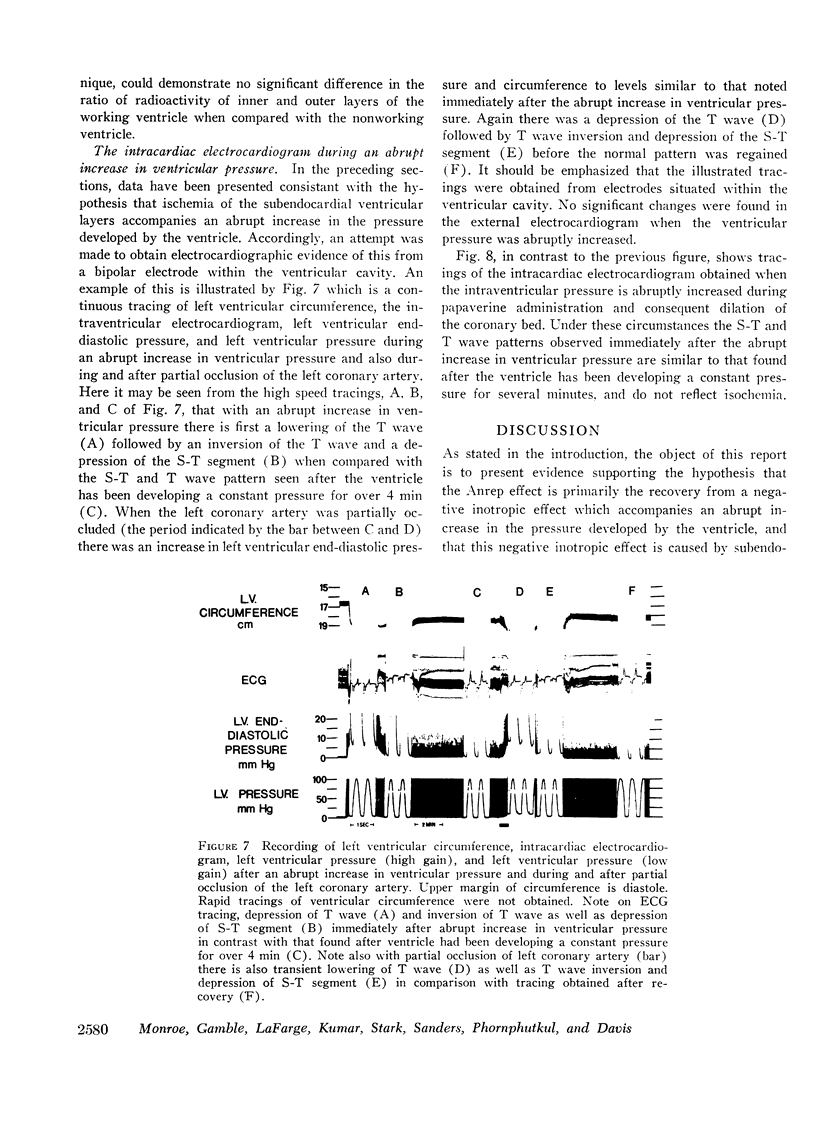
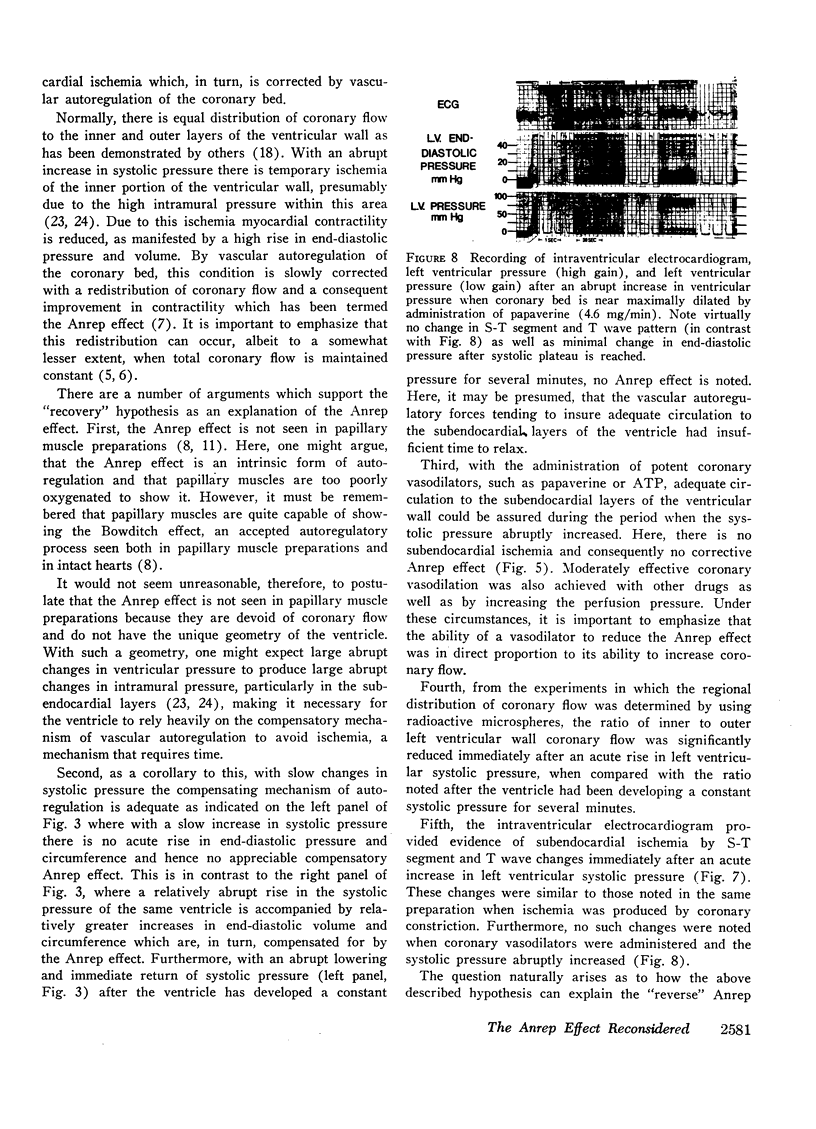
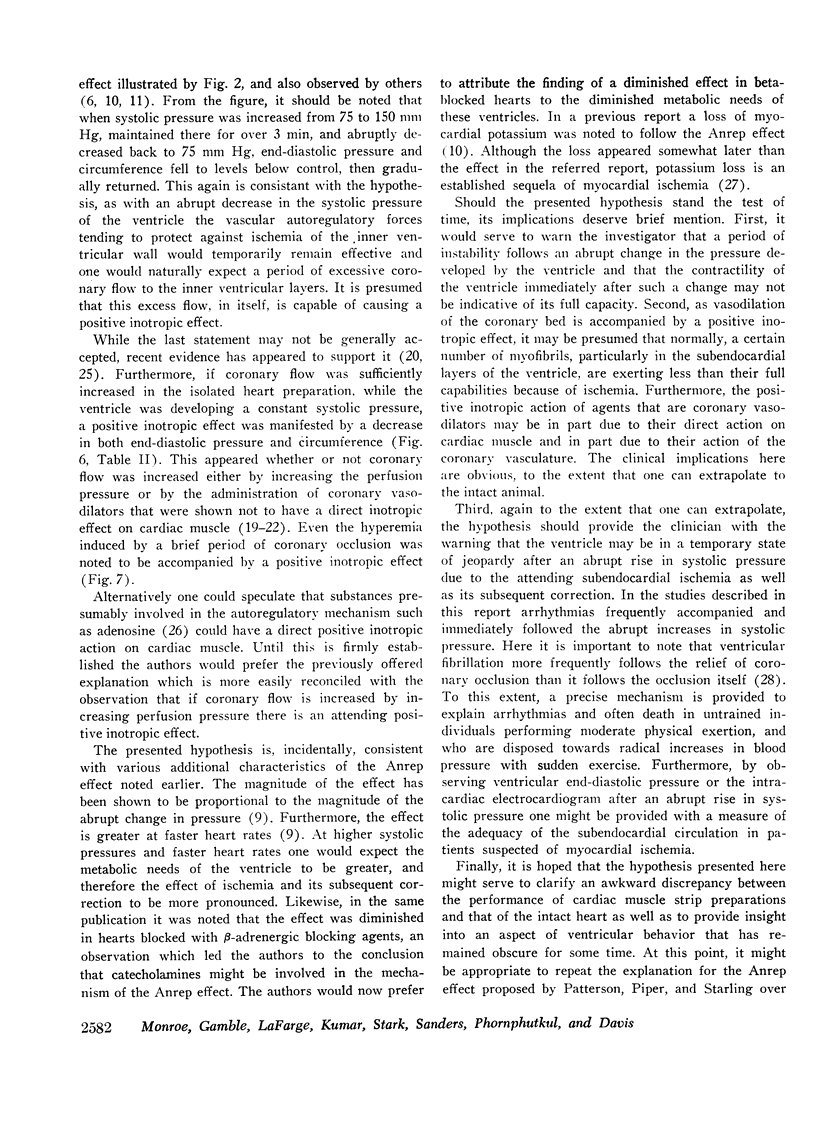
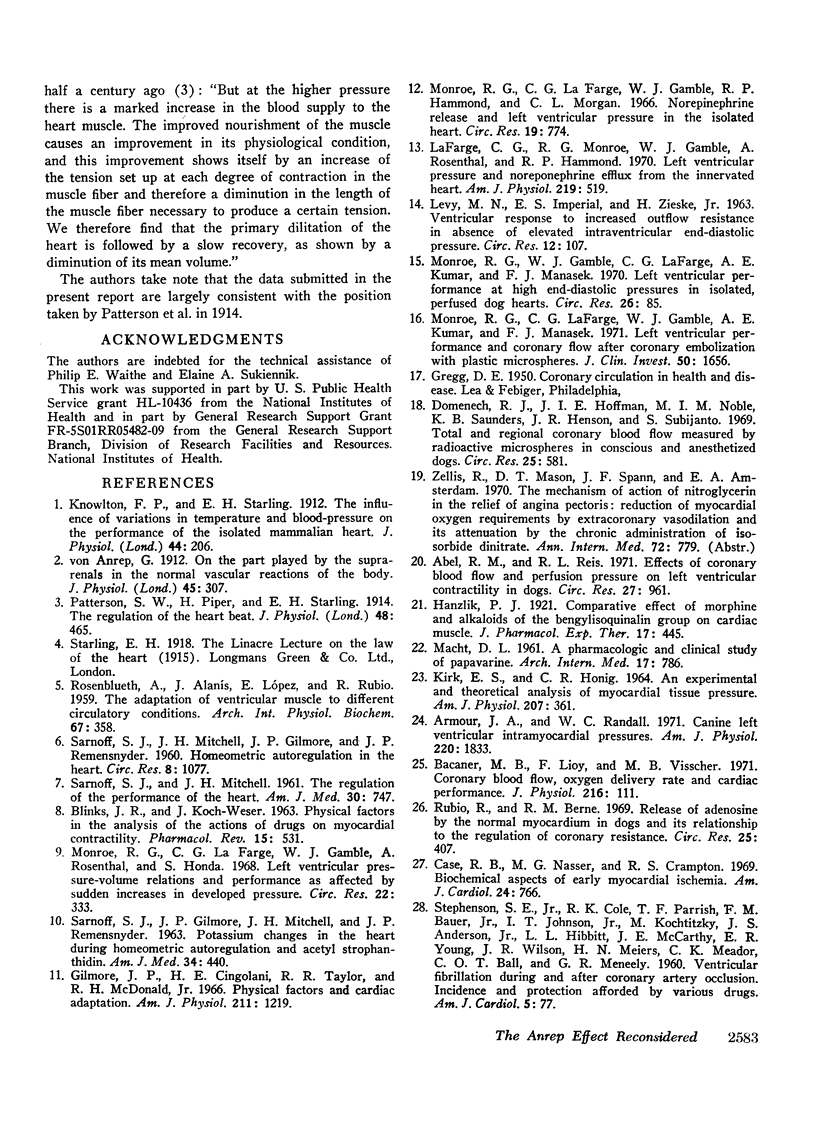
Selected References
These references are in PubMed. This may not be the complete list of references from this article.
- Abel R. M., Reis R. L. Effects of coronary blood flow and perfusion pressure on left ventricular contractility in dogs. Circ Res. 1970 Dec;27(6):961–971. doi: 10.1161/01.res.27.6.961. [DOI] [PubMed] [Google Scholar]
- Armour J. A., Randall W. C. Canine left ventricular intramyocardial pressures. Am J Physiol. 1971 Jun;220(6):1833–1839. doi: 10.1152/ajplegacy.1971.220.6.1833. [DOI] [PubMed] [Google Scholar]
- BLINKS J. R., KOCH-WESER J. PHYSICAL FACTORS IN THE ANALYSIS OF THE ACTIONS OF DRUGS ON MYOCARDIAL CONTRACTILITY. Pharmacol Rev. 1963 Sep;15:531–599. [PubMed] [Google Scholar]
- Bacaner M. B., Lioy F., Visscher M. B. Coronary blood flow, oxygen delivery rate and cardiac performance. J Physiol. 1971 Jul;216(1):111–127. doi: 10.1113/jphysiol.1971.sp009512. [DOI] [PMC free article] [PubMed] [Google Scholar]
- Case R. B., Nasser M. G., Crampton R. S. Biochemical aspects of early myocardial ischemia. Am J Cardiol. 1969 Dec;24(6):766–775. doi: 10.1016/0002-9149(69)90465-2. [DOI] [PubMed] [Google Scholar]
- Domenech R. J., Hoffman J. I., Noble M. I., Saunders K. B., Henson J. R., Subijanto S. Total and regional coronary blood flow measured by radioactive microspheres in conscious and anesthetized dogs. Circ Res. 1969 Nov;25(5):581–596. doi: 10.1161/01.res.25.5.581. [DOI] [PubMed] [Google Scholar]
- Gilmore J. P., Cingolani H. E., Taylor R. R., McDonald R. H., Jr Physical factors and cardiac adaptation. Am J Physiol. 1966 Nov;211(5):1219–1226. doi: 10.1152/ajplegacy.1966.211.5.1219. [DOI] [PubMed] [Google Scholar]
- KIRK E. S., HONIG C. R. AN EXPERIMENTAL AND THEORETICAL ANALYSIS OF MYOCARDIAL TISSUE PRESSURE. Am J Physiol. 1964 Aug;207:361–367. doi: 10.1152/ajplegacy.1964.207.2.361. [DOI] [PubMed] [Google Scholar]
- Knowlton F. P., Starling E. H. The influence of variations in temperature and blood-pressure on the performance of the isolated mammalian heart. J Physiol. 1912 May 6;44(3):206–219. doi: 10.1113/jphysiol.1912.sp001511. [DOI] [PMC free article] [PubMed] [Google Scholar]
- LEVY M. N., IMPERIAL E. S., ZIESKE H., Jr Ventricular response to increased outflow resistance in absence of elevated intraventricular end-diastolic pressure. Circ Res. 1963 Jan;12:107–117. doi: 10.1161/01.res.12.1.107. [DOI] [PubMed] [Google Scholar]
- LaFarge C. G., Monroe R. G., Gamble W. J., Rosenthal A., Hammond R. P. Left ventricular pressure and norepinephrine efflux from the innervated heart. Am J Physiol. 1970 Aug;219(2):519–524. doi: 10.1152/ajplegacy.1970.219.2.519. [DOI] [PubMed] [Google Scholar]
- Monroe R. G., Gamble W. J., LaFarge C. G., Kumar A. E., Manasek F. J. Left ventricular performance at high end-diastolic pressures in isolated, perfused dog hearts. Circ Res. 1970 Jan;26(1):85–99. doi: 10.1161/01.res.26.1.85. [DOI] [PubMed] [Google Scholar]
- Monroe R. G., La Farge C. G., Gamble W. J., Hammond R. P., Morgan C. L. Norepinephrine release and left ventricular pressure in the isolated heart. Circ Res. 1966 Oct;19(4):774–790. doi: 10.1161/01.res.19.4.774. [DOI] [PubMed] [Google Scholar]
- Monroe R. G., La Farge C. G., Gamble W. J., Rosenthal A., Honda S. Left ventricular pressure-volume relations and performance as affected by sudden increases in developed pressure. Circ Res. 1968 Mar;22(3):333–344. doi: 10.1161/01.res.22.3.333. [DOI] [PubMed] [Google Scholar]
- Monroe R. G., LaFarge C. G., Gamble W. J., Kumar A. E., Manasek F. J. Left ventricular performance and coronary flow after coronary embolization with plastic microspheres. J Clin Invest. 1971 Aug;50(8):1656–1665. doi: 10.1172/JCI106655. [DOI] [PMC free article] [PubMed] [Google Scholar]
- Patterson S. W., Piper H., Starling E. H. The regulation of the heart beat. J Physiol. 1914 Oct 23;48(6):465–513. doi: 10.1113/jphysiol.1914.sp001676. [DOI] [PMC free article] [PubMed] [Google Scholar]
- ROSENBLUETH A., ALANIS J., LOPEZ E., RUBIO R. The adaptation of ventricular muscle to different circulatory conditions. Arch Int Physiol Biochim. 1959 Jun;67(3):358–373. doi: 10.3109/13813455909072295. [DOI] [PubMed] [Google Scholar]
- Rubio R., Berne R. M. Release of adenosine by the normal myocardium in dogs and its relationship to the regulation of coronary resistance. Circ Res. 1969 Oct;25(4):407–415. doi: 10.1161/01.res.25.4.407. [DOI] [PubMed] [Google Scholar]
- SARNOFF S. J., GILMORE J. P., MITCHELL J. H., REMENSNYDER J. P. Potassium changes in the heart during homeometric autoregulation and acetyl strophanthidin. Am J Med. 1963 Apr;34:440–451. doi: 10.1016/0002-9343(63)90066-4. [DOI] [PubMed] [Google Scholar]
- SARNOFF S. J., MITCHELL J. H., GILMORE J. P., REMENSNYDER J. P. Homeometric autoregulation in the heart. Circ Res. 1960 Sep;8:1077–1091. doi: 10.1161/01.res.8.5.1077. [DOI] [PubMed] [Google Scholar]
- SARNOFF S. J., MITCHELL J. H. The regulation of the performance of the heart. Am J Med. 1961 May;30:747–771. doi: 10.1016/0002-9343(61)90211-x. [DOI] [PubMed] [Google Scholar]
- von Anrep G. On the part played by the suprarenals in the normal vascular reactions of the body. J Physiol. 1912 Dec 9;45(5):307–317. doi: 10.1113/jphysiol.1912.sp001553. [DOI] [PMC free article] [PubMed] [Google Scholar]


